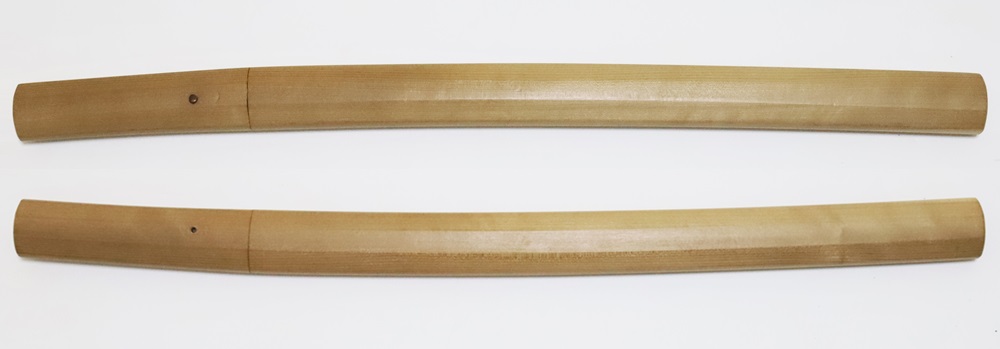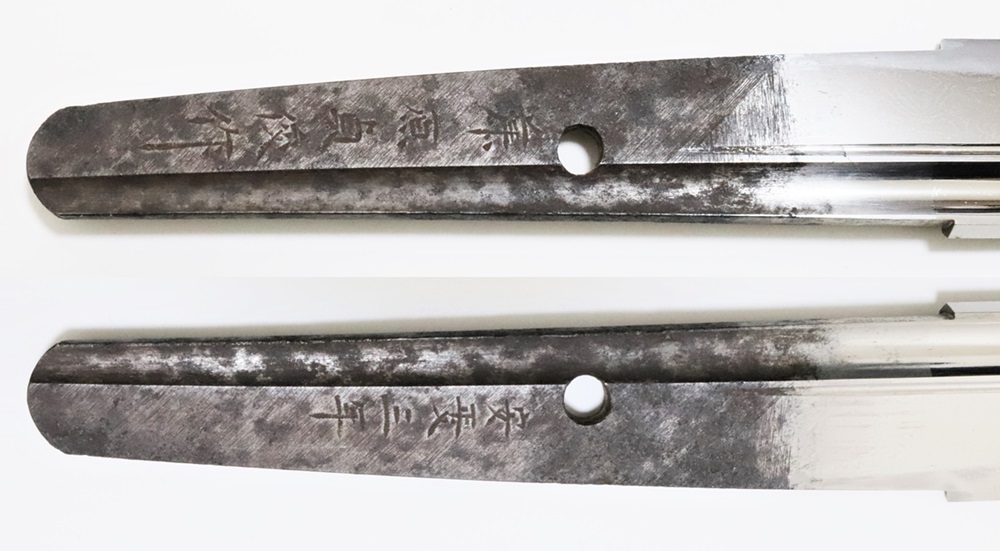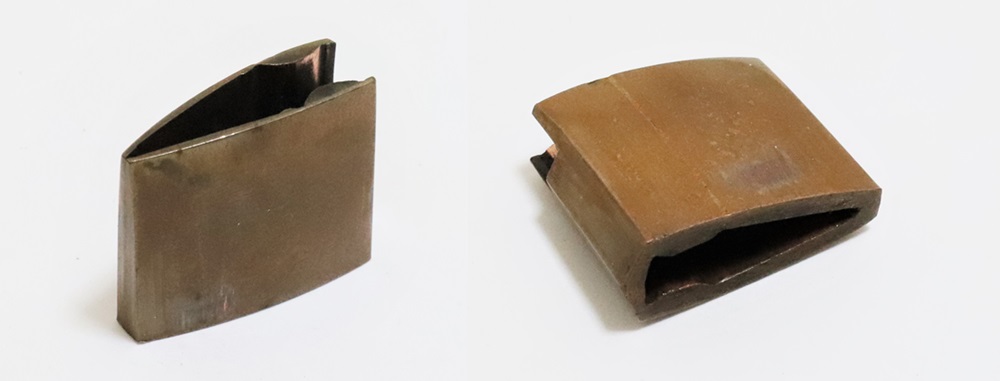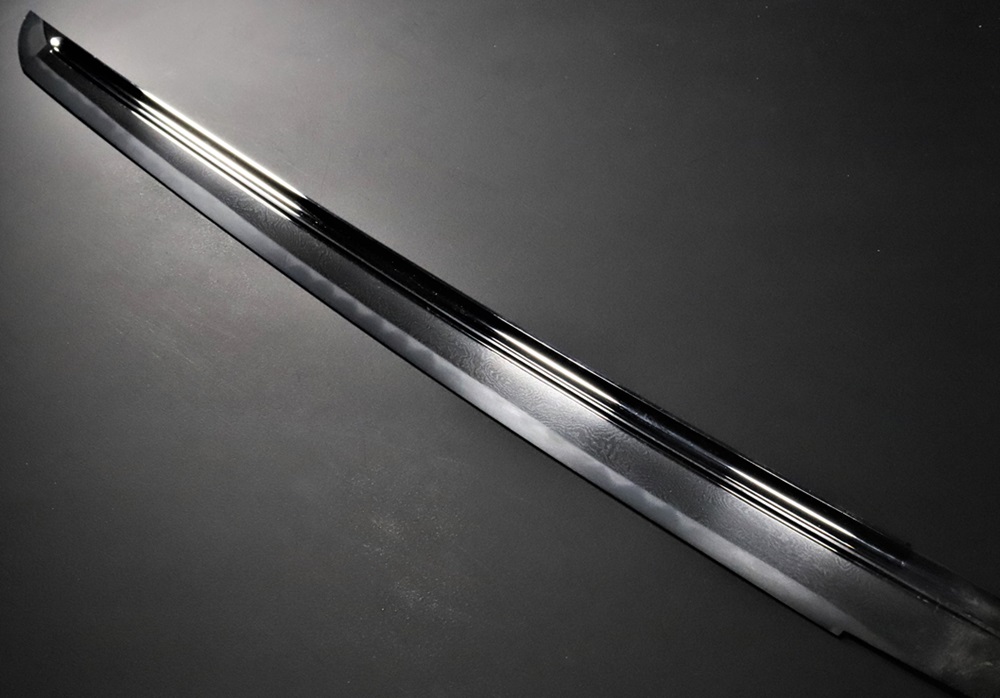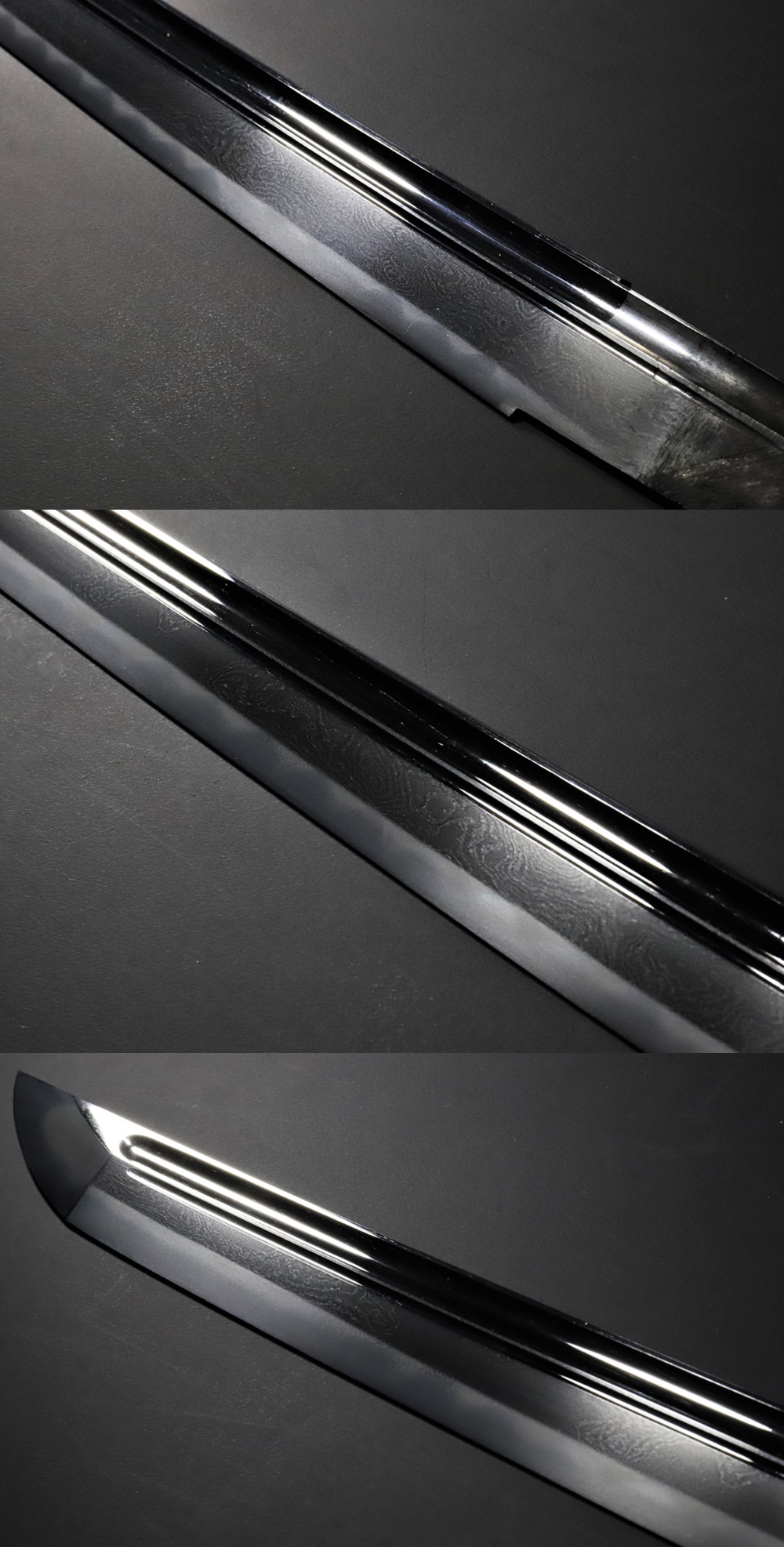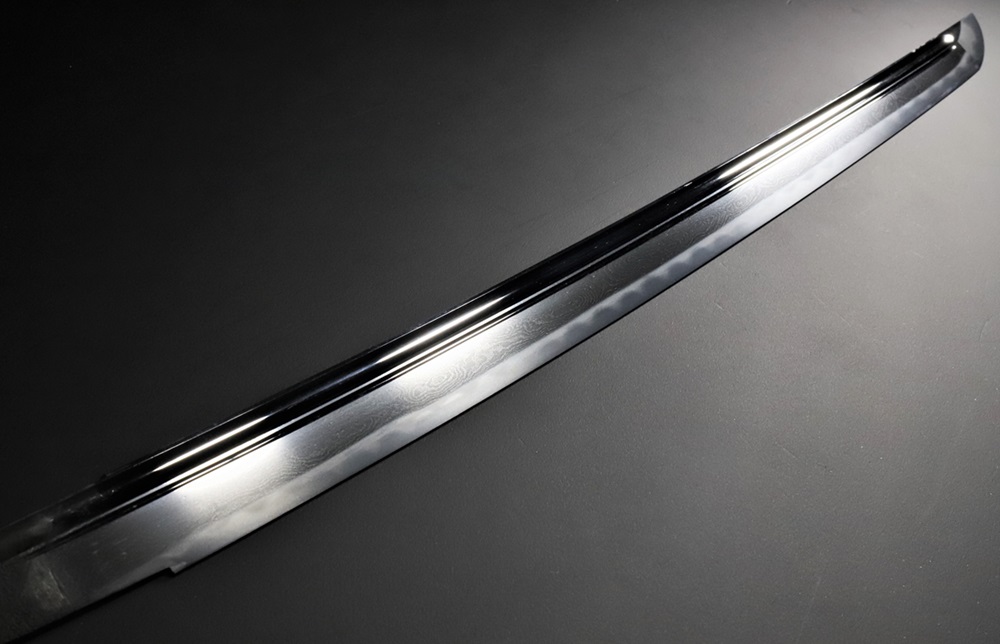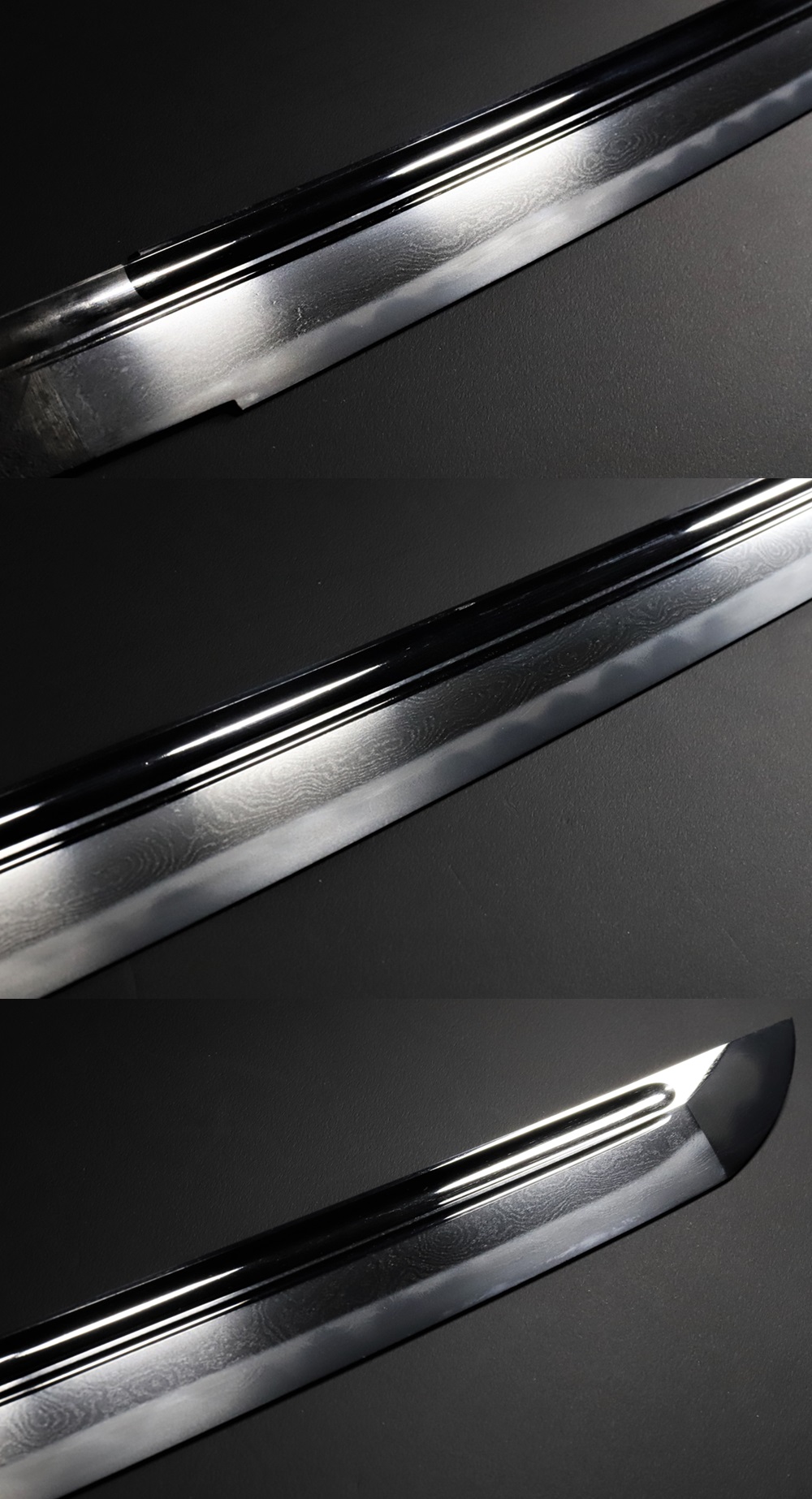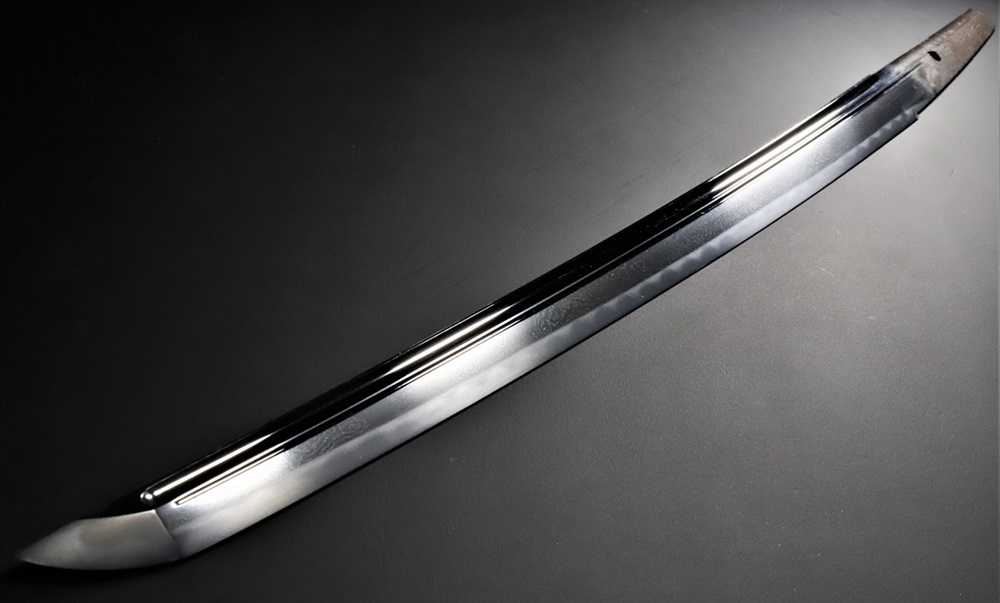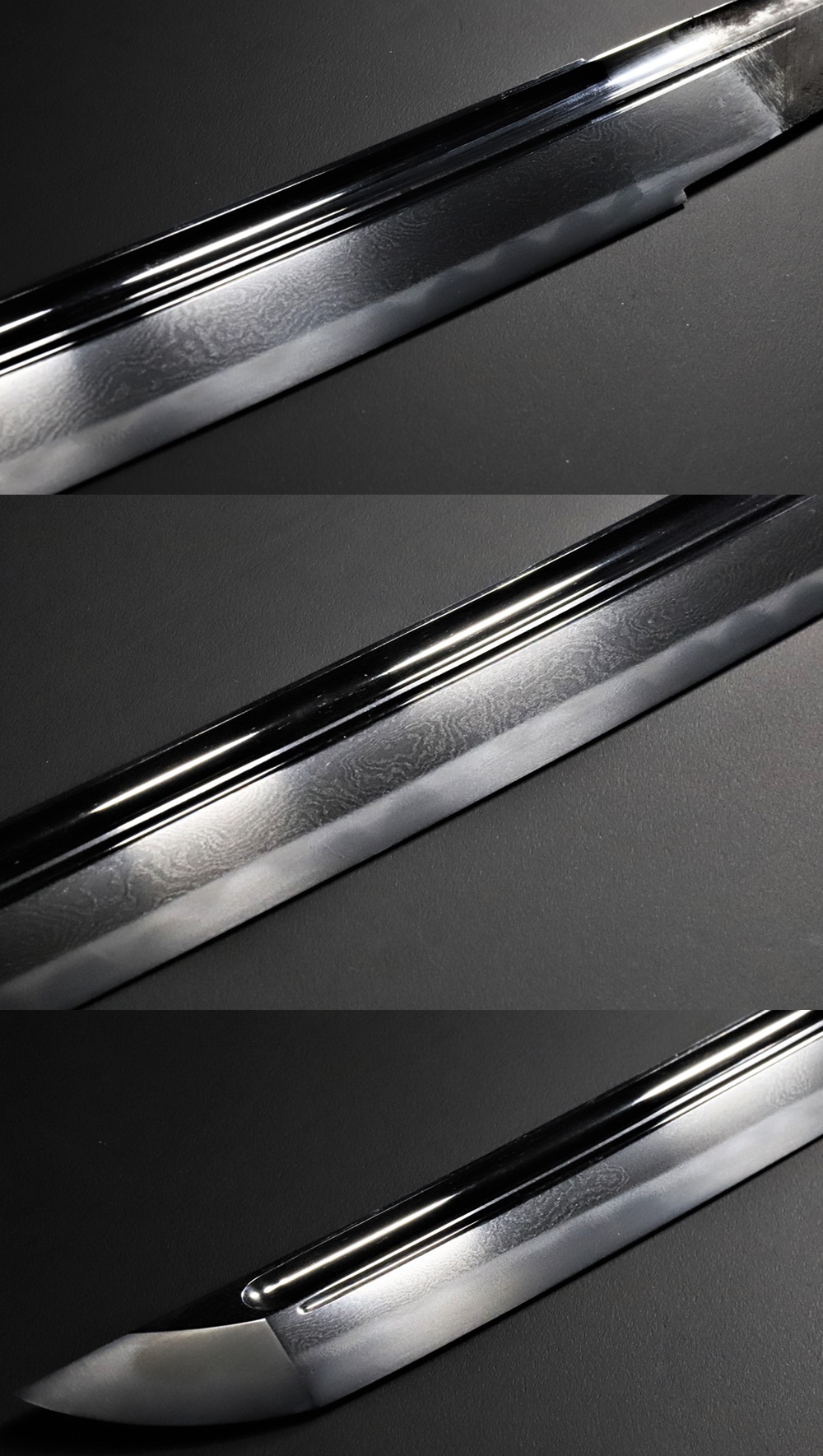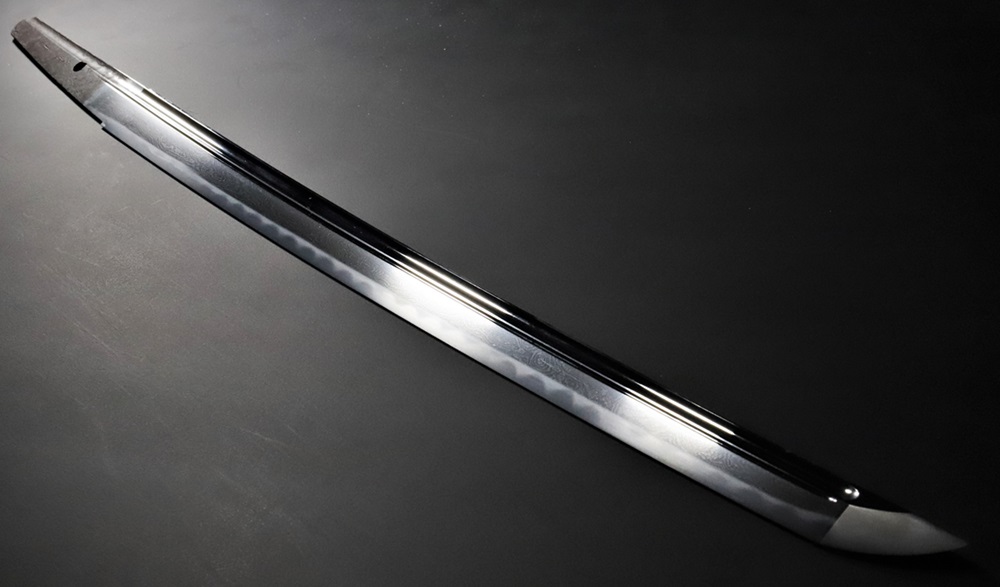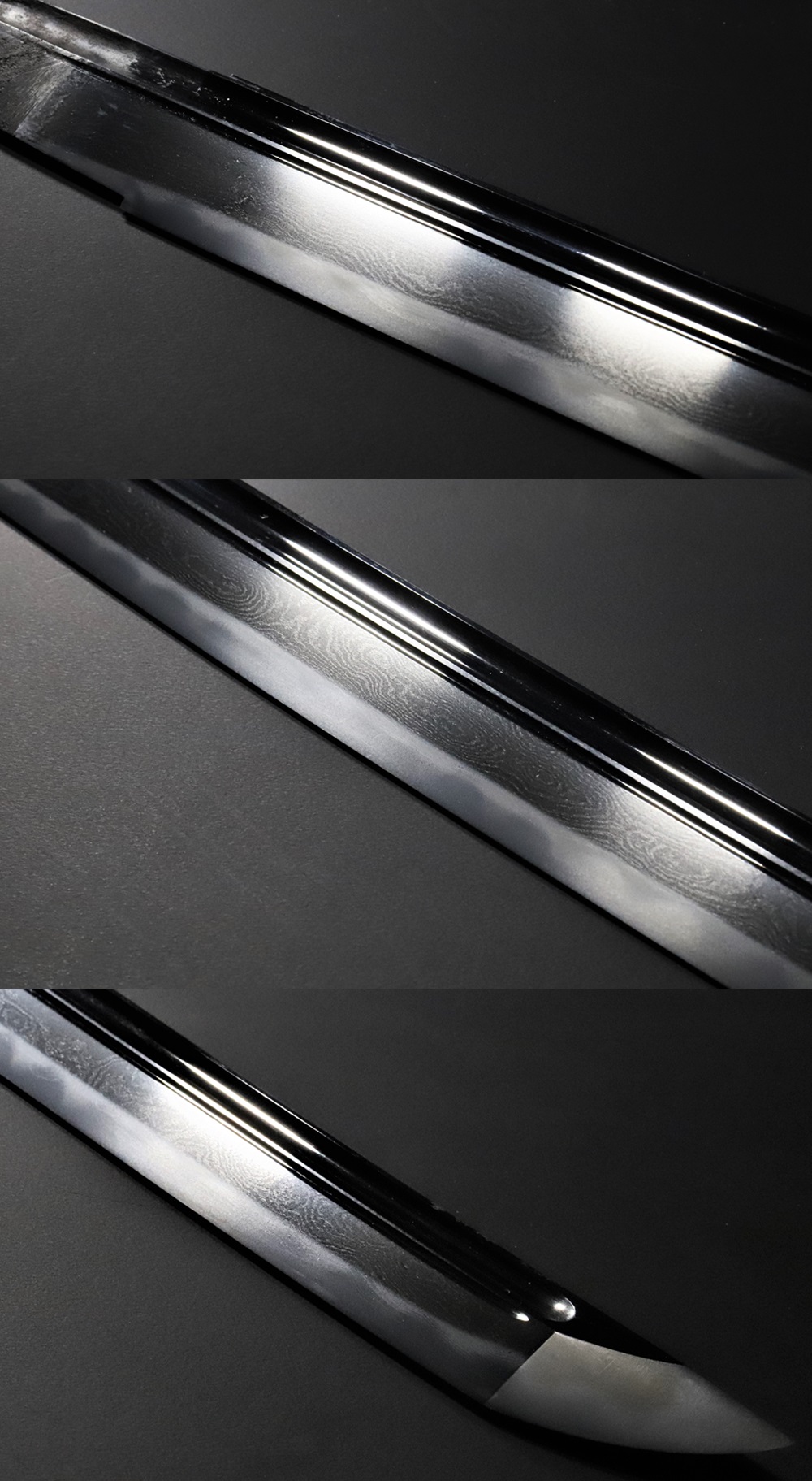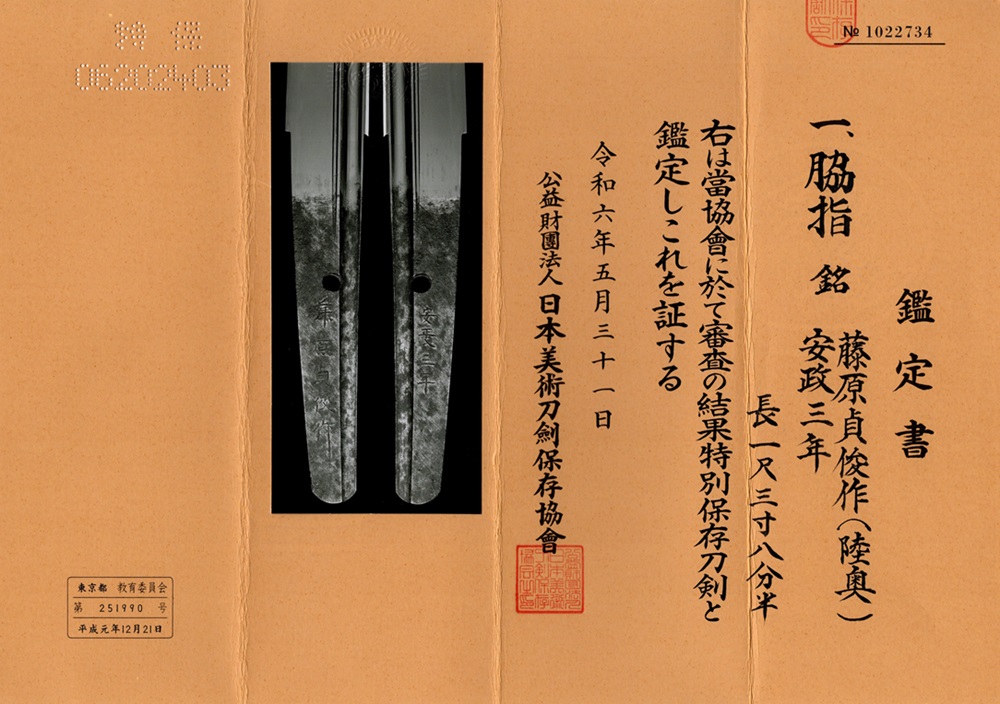
| Product No. WA-0736 藤原貞俊作 | |
|---|---|
| Mei |
Made by Fujiwara Sadatoshi Back: In 1856, the 3rd year of Ansei |
| Shape | Shinogizukuri Iorimune |
| Region | Mutsu Province |
| Era | Bakumatsu Period |
| Length |
41.9 cm 16.5 in |
| Sori (curvature) |
0.5 cm 0.2 in |
| Motohaba |
2.9 cm 1.1 in |
| Sakihaba |
2.2 cm 0.9 in |
| Munekasane |
0.7 cm 0.3 in |
| Status | Tokubetsu Hozon Token |
| Certification Date | May 31, 2024 |
| Registration Authority | Tokyo |
| Registration Date | December 21, 1989 |
| Jihada (Metal pattern) | Dense Mokume |
| Hamon (Temper line) | Aligned Gunome, Juzu-ba with Konie and Suanagashi |
| Engraving | Bohi with Soehi on each side |
| Bōshi (Point / Tip) | Midare Maru turn |
| Nakago (Tang) | Ubu, Sujikai with Kesho file and a Kurijiri end |
| Mekugiana (Rivet holes) | 1 |
| Habaki | Copper habaki |
Price |
SOLD |
| Fujiwara Sadatoshi[藤原 貞俊] was a swordsmith in the late Edo period. He left a katana with a long inscription that reads, "Sasaki Ichiryusai Minamoto Sadatoshi, made from iron from the Tsuyama River of Yazawa Mountain in Higashiyama, Mutsu.[佐々木一流斎源貞俊陸奥東山津谷川流谷沢山以出鉄作之]" and is said to be a descendant of the Mogusa[舞草] school of Mutsu Province. He forged in Shirakawa, and later became a swordsmith for the Mito clan, forging swords at the Shirahatayama Weapon Factory. His home province is Oshu. He used Go as ‘Seishinshi[清心子]’ and ‘Ichiryusai[一流斎]’. This wakizashi has bo-hi[棒樋] with soe-hi[添樋] on each sides, and has a dense, moist mokume-hada with a soroi-gunome juzu-ha pattern hamon. The neatly crafted nakago/tang shows the master's skill. An excellent work that seems to be a reproduce of Kotetsu[虎徹]. It has passed the Tokubetsu Hozon Token in 2024. |


